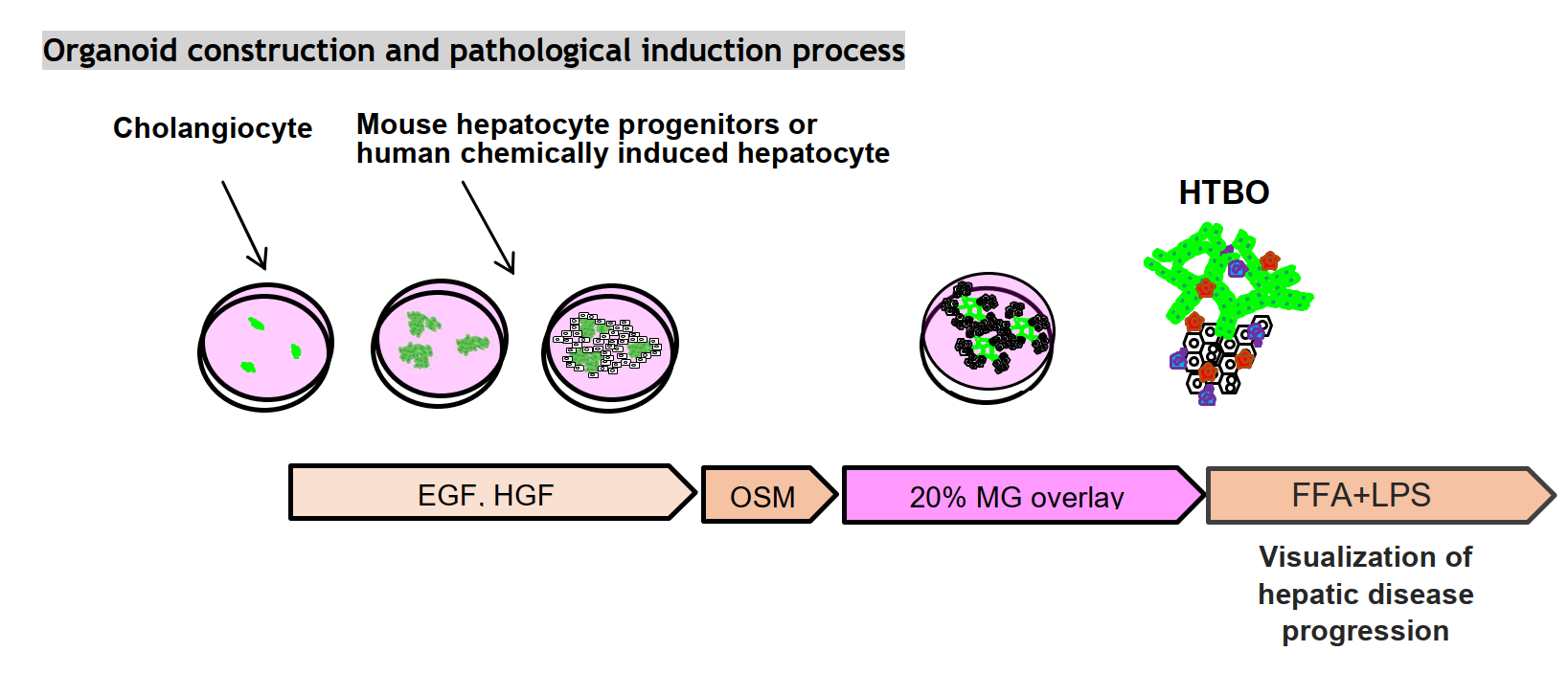Advantages
- Quick induction of fatty liver pathology after construction of liver organoids (3-4 weeks)
- Easy and Real-time observation of free fatty acid (FFA) accumulation in hepatocytes
- Efficient profiling of multiple CYP activities affected by progression of fatty liver disease
Background & Technology
This invention is a model for fatty liver diseases based on the Hepatobiliary Tubular Organoid (HBTO), a liver organoid with functional connections between hepatocytes and biliary epithelial cells, published in 2021 (Tanimizu N et al. Nat Commun 2021). Although several hepatobiliary organoids published before, HBTO is the only organoid in which the connection between hepatocytes and cholangiocytes can be visualized under a microscope. Give that some drug metabolites are transported to bile ducts in vivo, HBTO has the advantage of not only long-term expression of CYPs and albumin, but also of being equipped with a bile excretion channel, which enables analysis for metabolism of those drugs by collecting the excreted bile.
In this study, we constructed an ex vivo fatty liver model with fat droplet accumulation in hepatocytes and activation of hepatic stellate cells, which are known to play an important role in liver injury, by adding FFA and lipopolysaccharides (LPS) to HBTOs.
 |
Data
 |
Left: Hepatic stellate cells within HBTO can be identified as Quiescent, Intermediate, and Activated states by staining for Desmin and αSMA.
Right: Phase-contrast and fluorescence images of HBTOs cultured in the presence of FFA and LPS. Induction of hepatocyte death is not pronounced, but activation of hepatic stellate cells are induced. by addition of FFA and LPS.
Patent
・Pending JP,US,DE
Applicant
・Sapporo Medical University
Researcher
The University of Tokyo Center for Stem Cell Biology and Regenerative Medicine
Associate Professor Naoki Tanimizu
Development Phase
Current phase: Establishment of bile duct connected liver organoids and ex vivo fatty liver disease model with them, and completion of the histological observation and CYP profile analysis.
Next stage: 1) Construction of a cholestasis model using HBTOs containing human hepatocytes.
2)-1 Drug evaluation and exploratory screening using this fatty liver model (Collaboration)
2)-2 Commercialization of this fatty liver model and analysis for profile of CYP activities as a research tool (Collaboration)
We are looking for partner companies interested in development and research collaboration mainly in 2) of the above. We would be happy to start with a detailed explanation and discussion of the technology.
Project No: ON-03088a


